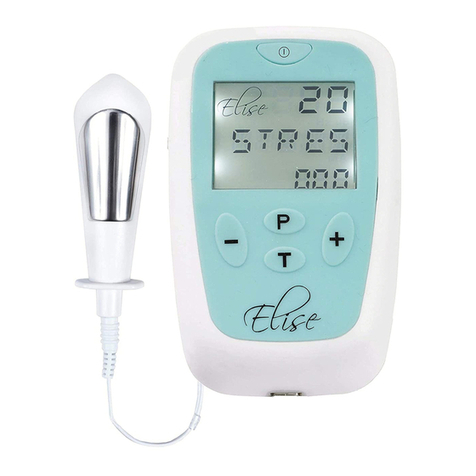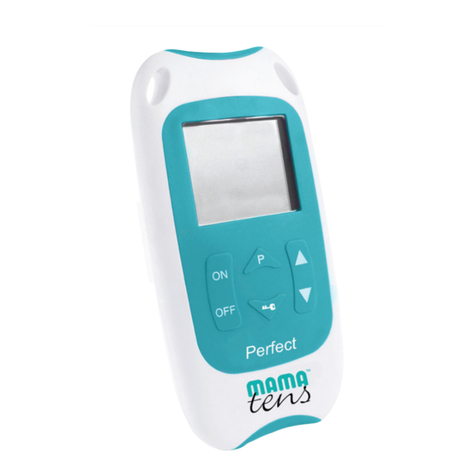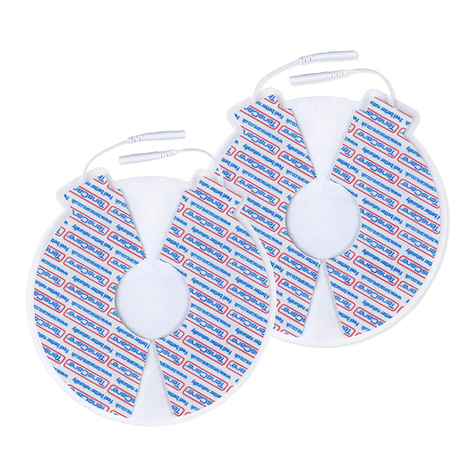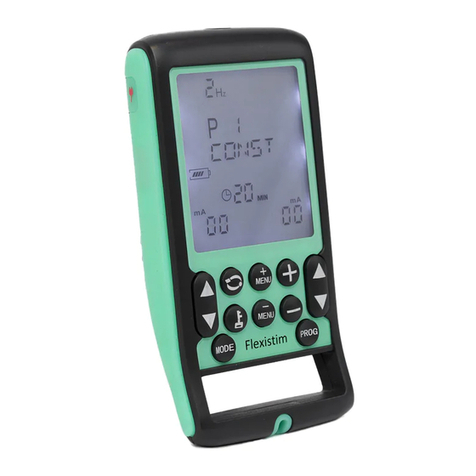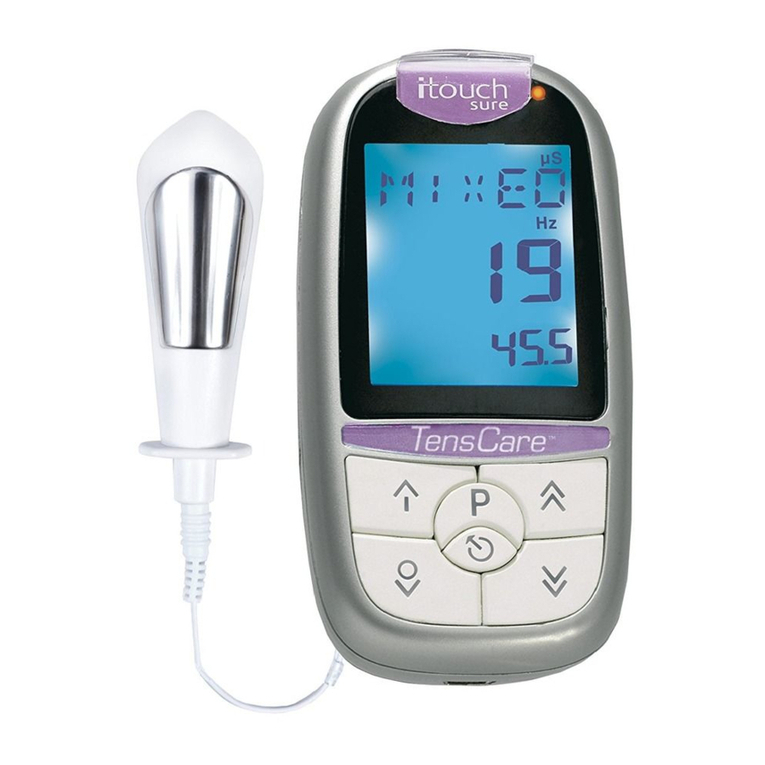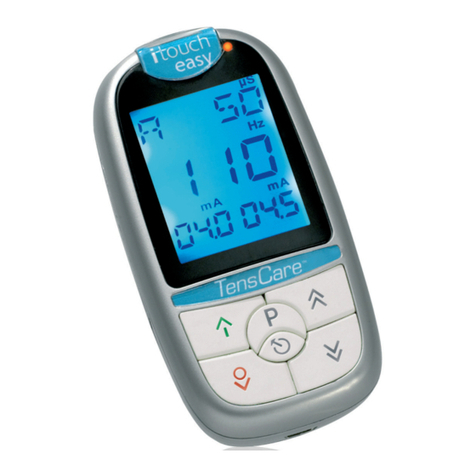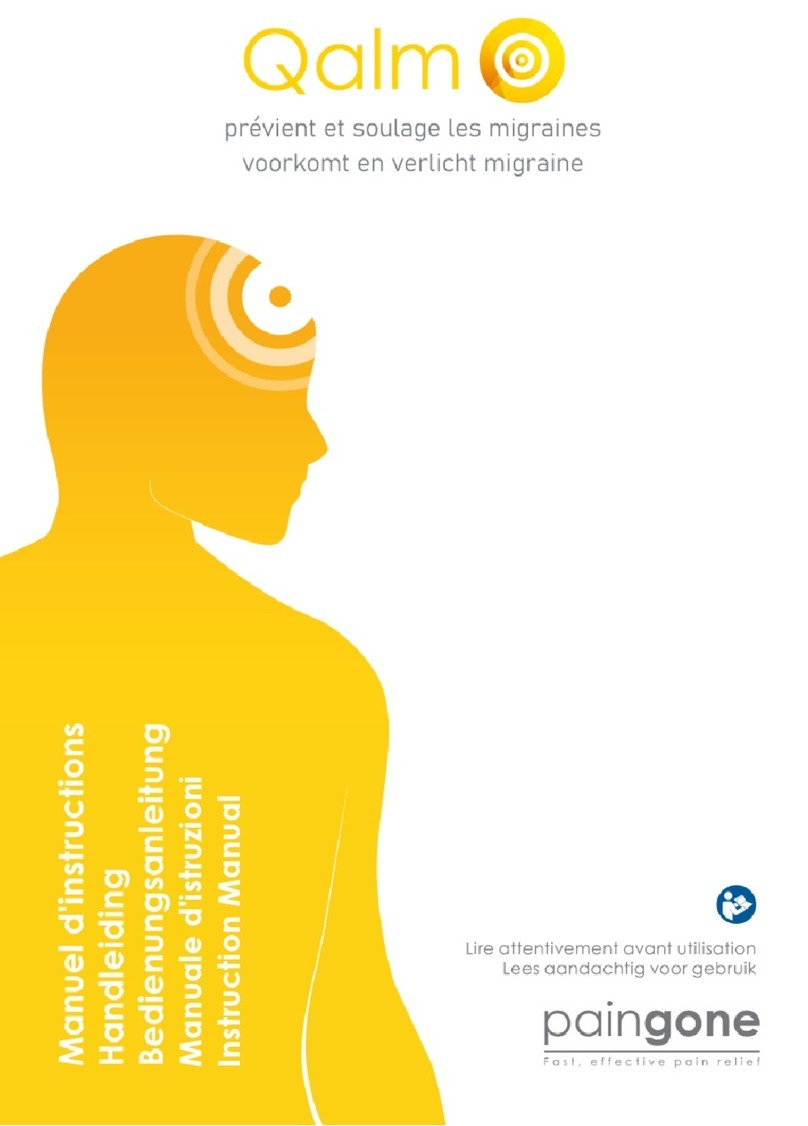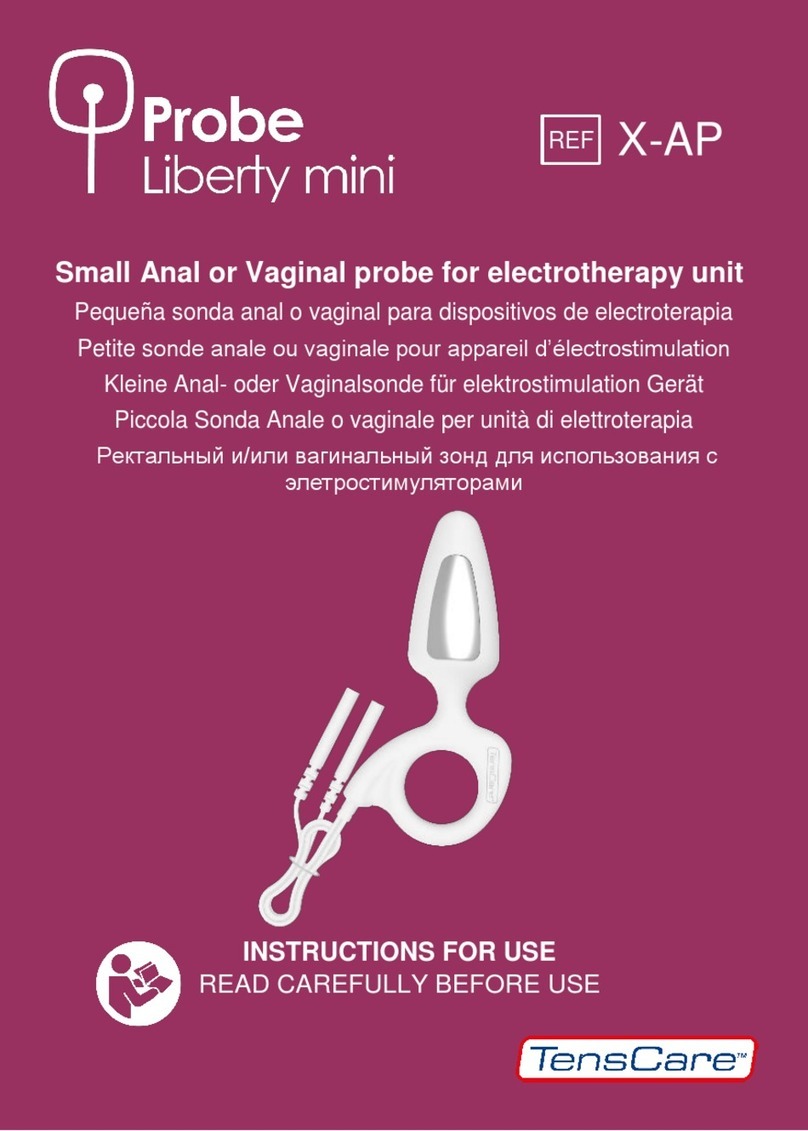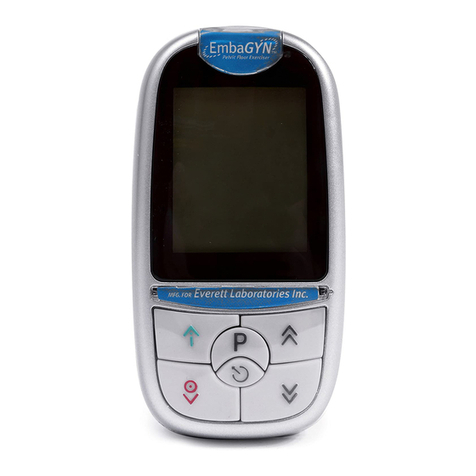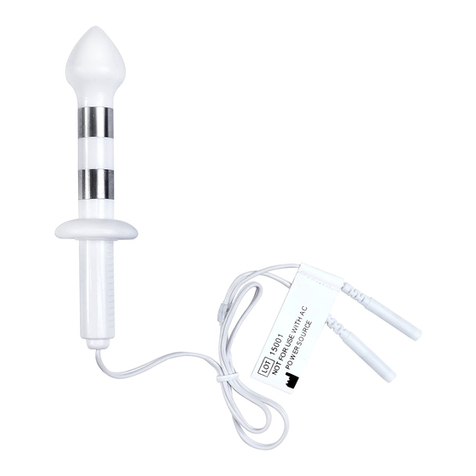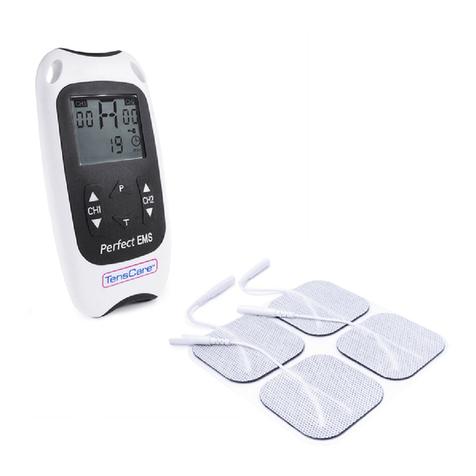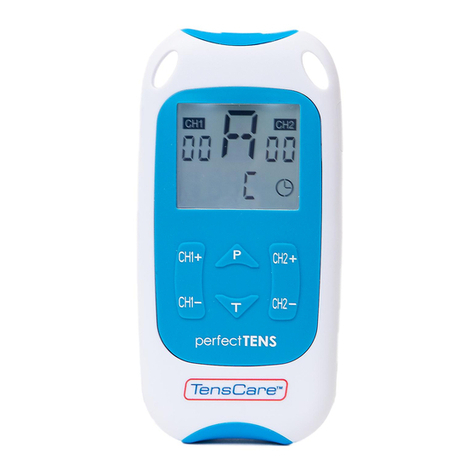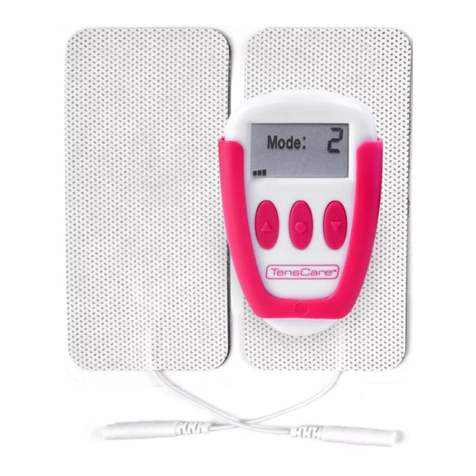11
For the TENS programmes (pain relief), it is not
desired to elicit a muscle contraction, however
Pulse Rate is important because different
frequency settings target different nerve groups
and the setting will determine if the "Gate
Theory" or "Endorphin Theory" of TENS will be
used.
•Work/Rest
All the EMS programmes include a WARM UP,
TRAIN, and COOL DOWN phase.In the TRAIN
phase, the stimulation is intermittent.
Once you have reached a comfortable level, 5
seconds after you stop pressing the button, the
intermittent Work/Active Rest phase will start.
For each programme, the unit will go through a
stimulation phase (Work) for 1-40 seconds,
followed by a phase without stimulation (Active
Rest) for a similar time.
This is to allow your muscles to recover from
exercise and avoid fatigue.
During the Work period (W), the unit will
generate contractions, try to contract the
muscle voluntarily at the time to get the best
possible results.
This cycle Work/Rest will continue for the
duration of the programme selected.
Wand Rare displayed on the screen.
•Ramp
RAMP is the time in seconds taken to move up
and down between zero and the set stimulation
strength (i.e. the time taken to move between
the Work stimulation and the Rest period). The
Sports TENS 2 has a fixed ramp time of 1.5 s
up and 0.75 s down.
•Constant and Burst Modes
Constant mode is when the sensation is
continuous versus Burst mode when the
sensation, as its name implies, is one of on and
off. Constant mode is often used for acute pain
via Pain Gate effect whereas Burst mode is
useful in chronic pain relief. Burst gives a
combination of Pain Gate and Endorphin
Release, but the squeezing feeling may not be
as comfortable. The stimulation intensity will
need to be relatively high. In Constant mode,
the sensation is continuous and is more of a
tingling pins and needles type.
•Modulation Modes
Modulation is when either the frequency or
pulse width sweep across range of settings. In
modulation mode, the machine delivers a less
regular pattern of TENS stimulation in an
attempt to reduce or minimise the
accommodation effects of regular, patterned
stimulation. This is potentially most useful for
patients who use TENS for several hours a day,
if for no other reason than accommodation
occurs at a slower rate and therefore less
intensity adjustment may be required. See
programmes F and G.
•HAN Stimulation
Invented by Professor Han, it is an alternating
mode or shifting between high and low
frequencies; stimulation works at a high
frequency and a relatively low pulse width; and
a low frequency and a relatively high pulse
width. This is thought to produce a better
analgesic effect and could be used to relieve
both acute and chronic pain.
Note: The Sports TENS 2 uses only
biphasic pulse waveform, as it
reduces the strain on the muscle,
leading to less muscle fatigue as well as
safer application, and reduce the risk of
skin irritation under the electrode.
